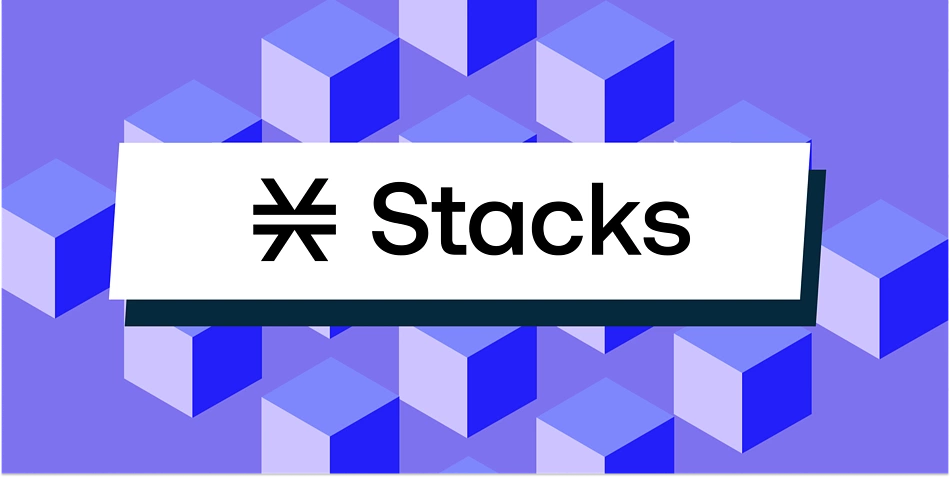Hello, crypto enthusiasts! Today, let’s talk about the STX coin, the native digital asset of the Stacks network.
What is STX?
STX, or Stacks token, is a utility coin that fuels the Stacks blockchain. It’s used for transaction fees and as a payment method for registering digital assets, like domain names.
Unique Features
- STX enables smart contracts and decentralized apps (dApps) on Bitcoin.
- It uses a unique ‘Proof of Transfer’ consensus mechanism, enhancing Bitcoin’s security.
- STX holders participate in the network’s decision-making process.
The STX coin is a fascinating player in the crypto world, bridging the gap between Bitcoin and dApps. Stay tuned for more insights!
Stacks: A Novel Approach to Blockchain
Launched in January 2021, Stacks (previously known as Blockstack) is a unique layer-1 blockchain solution that’s bringing programmability to Bitcoin. The network is the brainchild of Muneeb Ali and Ryan Shea, co-founders of Blockstack PBC, the company behind the Stacks project.
The Brains Behind Stacks
Muneeb Ali, with a Ph.D. in Computer Science from Princeton, serves as the CEO. His expertise lies in distributed systems, while Ryan Shea, also a Princeton alum, is a seasoned software engineer and entrepreneur who takes the helm as the CTO.
Innovative Features of Stacks
- Smart Contracts and DApps for Bitcoin: Stacks enables the development of smart contracts and decentralized applications on the Bitcoin network. This feature opens new possibilities for the oldest and most secure blockchain.
- Clarity Language: Stacks employs the Clarity language for smart contracts. Clarity is a decidable language, meaning it prevents unintended and ambiguous states that can lead to exploitable bugs.
- Proof of Transfer (PoX) Consensus: Stacks introduces a novel consensus mechanism called Proof of Transfer (PoX). PoX ties the Stacks blockchain to Bitcoin, leveraging Bitcoin’s robust security model while enabling STX token holders to earn BTC rewards for participating in consensus.
- Decentralized Storage: Stacks uses Gaia, a decentralized storage system, enabling users to maintain control over their data and protect their digital privacy.
Stacks is not just another blockchain project; instead, it brings new dimensions to the traditional properties of Bitcoin. The network creates an avenue for innovation while inheriting the security and stability of the Bitcoin blockchain, making it a significant player to watch in the evolving world of cryptocurrencies.
Advantages of Stacks (STX)
- Scalability: STX operates with Bitcoin’s blockchain, enhancing its scalability. Developers can leverage the power of Bitcoin’s blockchain to build and deploy scalable decentralized apps (DApps).
- Security: Stacks are immutable, ensuring your transactions and smart contracts are secure. Also, STX, operating on the Bitcoin blockchain which is considered one of the most secure blockchains in existence, is tamper-resistant.
- Decentralization: With a multichain architecture, Stacks brings intelligent contracts to Bitcoin, fostering decentralization. It provides users with the security of Bitcoin while enabling decentralized applications and smart contracts.
Disadvantages of Stacks (STX)
- Scalability: Stacks’ scalability is somewhat oversimplified. It inherits Bitcoin’s slow transaction speed which can create obstacles in processing a large number of transactions at the same time.
- Security: Though it’s generally secure, some security concerns can arise as Stacks interacts with other platforms, which could potentially expose it to vulnerabilities present in those platforms.
- Decentralization: While Stacks promotes decentralization, it is still reliant on Bitcoin’s infrastructure. This reliance could potentially limit the extent of decentralization if something affects the Bitcoin network.
Understanding the Role of STX Token in the Stacks Ecosystem
The STX token is the native cryptocurrency of the Stacks blockchain, serving as the fundamental unit of account within this innovative ecosystem. It plays a multifaceted role in the operation and governance of the network, allowing token holders to participate in various activities that support and develop its infrastructure.
Governance
One of the key functions of the STX token is governance. Token holders can participate in making crucial decisions that direct the project’s growth and development. By holding STX, individuals have voting power proportionate to their staked tokens, enabling decentralized decision-making in the Stacks ecosystem.
Staking
STX staking is another essential feature of the Stacks ecosystem. Participants can lock up their tokens to support the network, earning rewards in the process. Staking bolsters network security while also offering an option for passive income generation. With the implementation of Stacks 2.0, delegated staking has been introduced, allowing token holders to delegate STX to validators who process transactions and secure the network.
Additional Functions
Apart from governance and staking, the STX token is also used for:
- Contract Execution: STX tokens pay for the execution of smart contracts and the processing of transactions on the Stacks blockchain.
- Rewards: STX is distributed as rewards to miners for their efforts in securing the network.
- Token Mining (Stacking): Users can participate in mining new tokens by locking up BTC and STX together, rewarding participants in STX.
STX Token Supply and Distribution
The total supply of STX tokens is capped at 1.32 billion, which will be released over time according to a pre-defined schedule. There have been multiple rounds of STX token sales, which helped distribute the tokens broadly to various stakeholders.
Where to Buy STX Token
To purchase STX tokens, individuals can turn to popular cryptocurrency exchanges like Binance, OKX, and KuCoin. Once acquired, users can store STX in compatible wallets such as the Xverse wallet or Ledger hardware wallets for increased security and convenience.
The Stacks Ecosystem: A Promising Future with Increasing Usage
The Stacks ecosystem, built on the Bitcoin blockchain, is gaining traction in the crypto world. As a professional crypto trader, I’ve been observing its development and I’m excited to share my insights.
Understanding the Stacks Ecosystem
The Stacks ecosystem is designed to bring smart contracts and decentralized applications (dApps) to Bitcoin. It’s a unique layer-1 blockchain solution that connects to Bitcoin’s blockchain, enhancing its functionality without altering its core properties.
The Impact of Increasing Usage
With increasing usage, the Stacks ecosystem is poised for significant growth. Here are a few reasons why:
- Scalability: As more users join, the network becomes more robust. Stacks uses a consensus mechanism called ‘Proof of Transfer’ (PoX), which leverages Bitcoin’s security, making it highly scalable.
- Developer Interest: The ability to build dApps on Bitcoin is attracting a growing number of developers, fueling innovation in the ecosystem.
- DeFi Potential: Stacks’ smart contracts functionality opens up possibilities for Bitcoin-based DeFi applications, a largely untapped market.
Challenges and Opportunities
While the Stacks ecosystem shows promise, it’s not without challenges. These include regulatory uncertainty and competition from other smart contract platforms. However, these challenges also present opportunities for growth and innovation.
As a crypto trader, I believe the Stacks ecosystem has a bright future. Its unique approach to leveraging Bitcoin’s security and functionality could make it a significant player in the crypto space. As always, it’s essential to do your research and invest wisely.
Conclusion: Stacks Technology and STX Coin
The potential of Stacks Technology is promising, as it aims to bring smart contracts and decentralized applications (dApps) to Bitcoin. This unique approach could open new avenues for Bitcoin’s utility, making it more than just a digital gold. The technology’s focus on security, scalability, and interoperability are key factors that could drive its adoption.
Advisability of Investing in STX Coin
Investing in the STX Coin should be approached with careful consideration. While the Stacks technology has potential, it’s important to remember that the cryptocurrency market is highly volatile. Here are a few points to consider:
- Market Trends: Keep an eye on the overall crypto market tendencies and the performance of STX compared to other coins.
- Adoption Rate: If more developers start building on the Stacks platform, it could increase the demand for STX.
- Regulatory Factors: Regulations around cryptocurrencies can impact the price and usability of STX.
In conclusion, while the Stacks technology shows promise, potential investors should conduct thorough research and consider their risk tolerance before investing in STX. As always, it’s recommended to diversify your investment portfolio.

